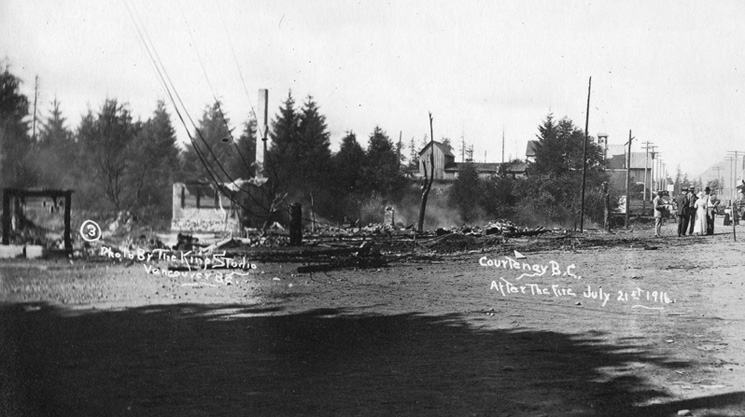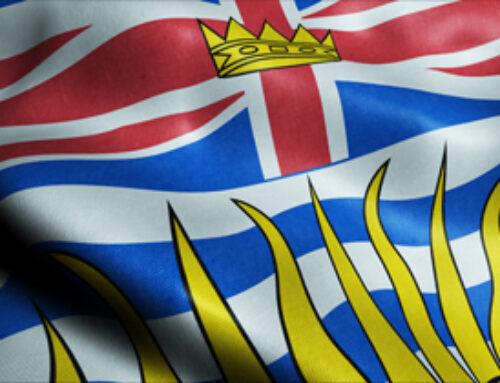
Courtenay BC after the fire July 21st, 1916. Photo by The King Studio, Vancouver, BC. CDM 972.54.6.
One hundred years ago, Courtenay joined the modern era when its new waterworks system opened, providing residents with a stable source of running water in their homes. But the new water mains offered more than just material comfort — they brought safety and security to a beleaguered city that had suffered major fires.
On the night of July 21, 1916, the manager of Courtenay Opera House, Bert Whittle, was closing up when he heard the sound of crackling flames. The fire brigade was assembled with the ringing of the Presbyterian church bell and volunteers hauled water in buckets from the Courtenay River, a few wells, and the Comox Creamery reservoir. When the fire was finally extinguished, 13 buildings with 33 businesses had been destroyed.
Another fire on September 13, 1919, destroyed a number of Courtenay businesses along 5th Street. While the damage sustained in this fire was more localized, it underlined the difficulties of putting out fires with only buckets and limited access to water. The city had an urgent need for firefighting equipment; a secure, reliable water supply, and an effective system to move that water to the scene of the fire.
Joseph McPhee, a dynamic entrepreneur and Courtenay’s founding father, had previously tried to persuade his fellow citizens that a water supply system was needed by the growing community. At that point, a millpond on 8th Street was the main water source for Courtenay residents, but when the flume that supplied the millpond began to leak, the situation grew dire.
So, between 1919 and 1921, Courtenay Council worked on installing a system that would draw water from Brown’s River and move it to a reservoir near Lake Trail Road before distribution to the homes of the city. On October 12, 1921, that new water supply was opened.





